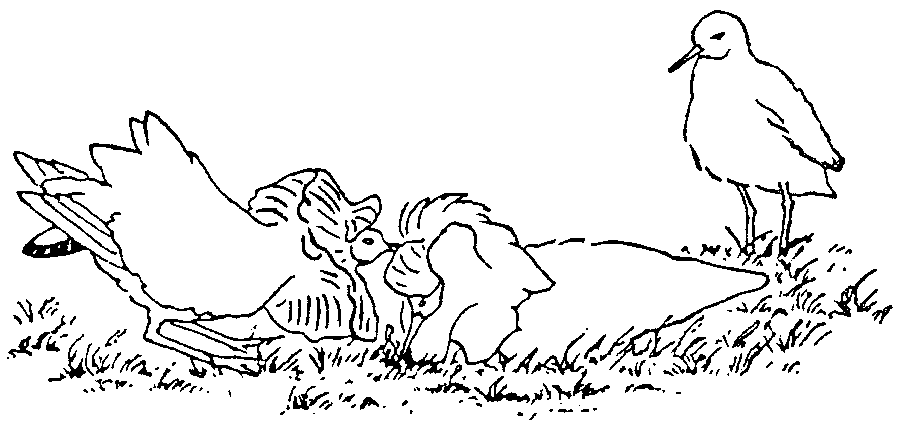David B. Lank, Adjunct Professor
AVIAN REPRODUCTIVE STRATEGIES
Biological Sciences
Simon Fraser University

B.Sc. Marlboro College
M.Sc. University of Minnesota
Ph.D. Cornell University
B8274, (778) 782-3010
E-mail: dlank@sfu.ca
CLICK HERE for more
information on Lank's Research
Behavioural
Ecology Research Group
Wildlife Ecology
Research Group
Current Research Program
I focus on variation in reproductive strategies within and between sexes, and among species, viewed in the context of population biology and evolutionary ecology. I combine field observation, experiments, and modelling to determine proximate mechanisms controlling variation in behaviour and the population consequences and adaptive significance of such mechanisms.
I am pursuing three subject: (1) behavioural polymorphism in the mating behaviour of male Ruffs (Philomachus pugnax), a peculiar old-world sandpiper, (2) behavioural decision making throughout the annual cycle of migratory Western Sandpipers (Calidris mauri), and (3) the conservation biology of Marbled Murrelets.
Ruffs: The Ruff presents a challenge to evolutionary ecologists because it has a stable genetic polymorphism in male mating behavior (Lank et al. 1995). Two kinds of males persist in all Ruff populations. Darker-plumaged "resident" males defend clustered mating courts against other residents. Lighter-plumaged, non-territorial "satellite" males share courts with residents1 in temporary, uneasy alliances (See picture at bottom). Both kinds of males mate on courts with visiting females, who provide all of the parental care. Males do not change plumage or behavioral type as they age. While variation in male mating behavior is widespread among animals, maintenance of a genetic polymorphism - a stable set of strategies - occurs in only a handful of species. How are both morphs maintained?
Major activities in this project have included 6 field seasons in Finland and the establishment of a breeding captive research flock in Canada. I am asking: what degree of developmental flexibility exists? How does each morph obtain matings? What controls the morph ratio? Is reproductive success per morph negatively frequency-dependent? Does female genotype influence mate choice? What is the ecological context which favoured the evolution of such a system in ruffs but not in other species of shorebirds or other lekking birds? Approaches in these studies include DNA fingerprinting, field experiments, hormonal measurement and manipulation, studying the development of behaviour, the communication function of plumage variability, mate choice experiments, and game theoretical modelling of evolutionary scenarios.
Western Sandpipers: The Western Sandpiper is the most common migratory shorebird on the Pacific Coast. I foster a collaborative research network program focusing on the behavioural decision making throughout the annual cycle of this species. This program aims at quantifying the birds' abilities to cope with variation or environmental changes at different stages and geographic locations during their annual cycle, and testing alternative methods of obtaining demographic parameters on a migratory bird which might be used to model population dynamics. Activities by members of the group include studies on the breeding grounds in Alaska, at migratory stopover sites along the Pacific Coast, and on wintering grounds in Mexico and Panama.
Marbled Murrelet The Marbled Murrelet is an small seabird that nests in old-growth rainforests. The species is classified as threatened in British Columbia due to ongoing forestry activity. I am serving on the Canadian Recovery Team, which recommends conservation measures, and collaborating with other CWE researchers working with this species.
I am affiliated with both the Centre for Wildlife Ecology and the Behavioral Ecology Research Group.
CLICK HERE for references
and copies of publications and more links
 Territorial and satellite males co-occupying a mating
court with a female nearby. The territory owner, with a darker breeding
plumage, left, appears to try to control the satellite by circling and 3bill
thrusting2" over his head.
Territorial and satellite males co-occupying a mating
court with a female nearby. The territory owner, with a darker breeding
plumage, left, appears to try to control the satellite by circling and 3bill
thrusting2" over his head.
This page last updated June 1997.